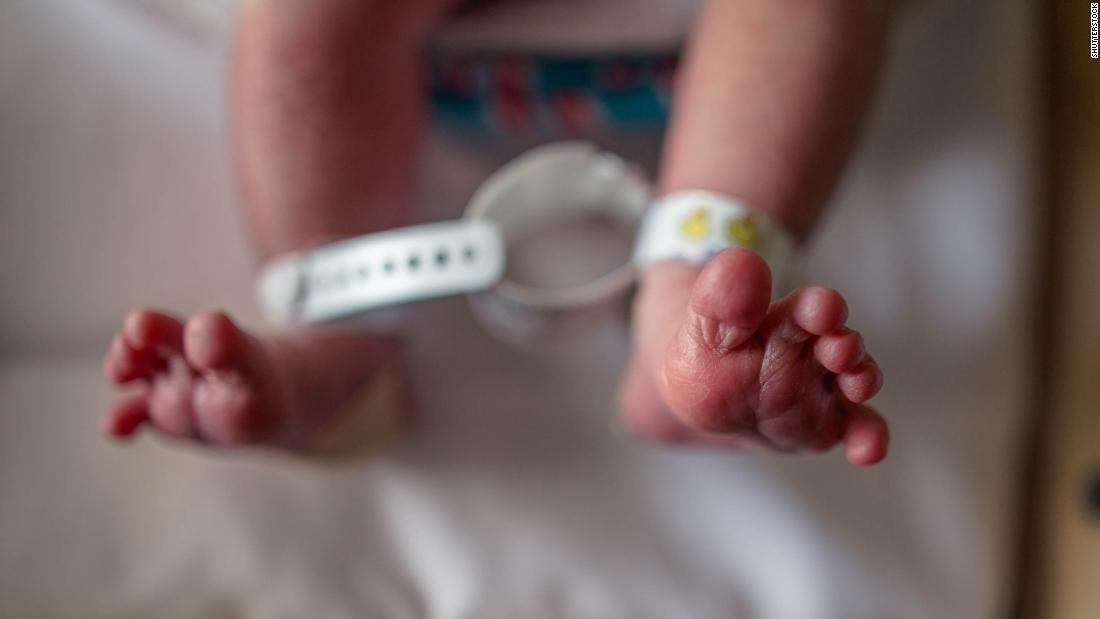Covid-19 causes global increase in pregnancy problems 0:38
(CNN) -
Remember the pandemic baby boom some thought we were going to see about nine months after the coronavirus shutdowns swept across the United States?
Well, as the experts predicted, at the moment it seems that it is shaping up more like a "baby bust", that is, a collapse in the number of babies.
The new data released Wednesday by the U.S. Centers for Disease Control and Prevention's (CDC) National Center for Health Statistics doesn't paint the whole picture, but it does give us an idea of what it's happening.
The birth rate in the United States fell in the last quarter of 2020, decreasing significantly, more than 6%, with respect to the same period of the previous year.
This is notable because the data includes December 2020, the first month in which most babies born would have been conceived after the onset of the pandemic.
A more detailed breakdown of government birth data also shows that the largest decline in births occurred in December.
China's birth rate reaches the lowest level since the country was founded in 1949
“We have been speculating for a long time about the impact of covid on births.
This latest data from the CDC is the best opportunity we have to date to document what actually happened, ”says Phillip Levine, a professor of economics at Wellesley College.
advertising
Government reports published on Wednesday do not offer any analysis on how covid-19 influences these figures.
But Levine and other experts say there is no question that it is playing a role, and that these numbers point to some ways the pandemic could shape our society in the years to come.
Brazil asks women to postpone pregnancies due to the risk of covid-19 variants
Even before the pandemic, U.S. births were on the decline
Demographers have said that a combination of factors, such as declining births, increasing deaths and declining immigration, were already helping to slow the country's population growth.
But the coronavirus pandemic intensified these trends.
Other data released Wednesday show the downward trend in births and fertility rates in the United States continues.
Last year there were 3.6 million births in the United States, 4% less than the previous year.
Following an increase in 2014, the number of births has fallen by an average of 2% per year.
This is the fewest births in the U.S. since 1979.
The U.S. birth rate fell for the sixth year in a row, reaching a record low of 55.8 births per 1,000 women between the ages of 15 and 44, according to the National Center for Health Statistics, also down 4 % Over the previous year.
Singapore will pay citizens to have a baby during the pandemic
The new reports are based on provisional data, which includes more than 99% of the birth certificates issued last year.
But what is the role of the pandemic?
Based on CDC data, Levine estimates that the overall fertility rate dropped 8.6% at the end of 2020 (including the second half of November and all of December) as a result of COVID-19.
And new government data on the birth rate also shows that some age groups - teenage girls and women 35 and older - were hit harder than others, Levine said.
Couples can postpone pregnancies when life is difficult
The data released on Wednesday are provisional figures that could change.
And experts have pointed out that, in terms of total births and fertility rates, the real impact of the pandemic will be noticeable in the data for 2021, when all babies born will have been conceived after the start of the health crisis.
"The big question in all this is: is it going to continue?"
Levine states.
"Is it a one-off phenomenon or is it a more lasting downward trend?"
There are already signs that this trend will continue into 2021, including interim data released by states, as noted by Levine and co-author Melissa S. Kearney in an op-ed in The New York Times earlier this year.
Pregnancies in times of the coronavirus 2:59
Levine and Kearney predict that the United States could have a baby bust of 300,000 fewer births this year.
The researchers claim to have incorporated economic data such as unemployment rates, as well as other factors, such as anxiety and social conditions, into their forecast.
“We are in the midst of a major economic decline.
That tends to make people reluctant to have children.
And a public health crisis creates tremendous uncertainty in people's lives, ”says Levine.
There are other factors at play: People who already have children have had a hard time reconciling work and family life while schools are closed, and building relationships has been more difficult for people.
"All of these things are happening simultaneously," says Levine.
In general, life is just hard these days.
And having a baby at a time when life is difficult may not make sense. "
In some cases, couples who put off having a baby in 2020 may try again in the future.
But that depends on what happens next.
"The longer and more persistent the crisis, and the deeper and more sustained the income losses from it, the more likely it is that many of the births lost to COVID will be lost forever," Kearney and Levine wrote.
How can this influence the future of America?
Kenneth Johnson, a professor of sociology and demographer at the University of New Hampshire, says it is too early to know how long these fertility declines will last and whether birth rates will eventually return to their pre-pandemic levels or even begin to rise further. there.
Nobody knows, honestly.
It's a unique situation, ”he says.
But if you combine the decline in births with the high number of deaths that occurred in the United States last year, more than 3.3 million, and the decrease in immigration, Johnson says that the United States already has a "population growth". drastically reduced ”.
A total of 25 states had more deaths than births in 2020, a record, according to Johnson's analysis.
In 2019, Johnson says, five states had more deaths than births.
“Even during the flu epidemic, we didn't have anything like this.
… Going from 5 to 25 is just disconcerting, ”he says.
That trend is likely to continue in many states this year.
Pandemic in the US could cause up to 500,000 fewer births, study suggests
The researchers hope to ultimately obtain more detailed data that will allow them to analyze how the pandemic affected the birth rates of different groups, taking into account factors such as age, race, socioeconomic status and geography.
By 2021, that kind of information will likely not be available until September 2022.
"There will be increments along the way that help us complete little pieces of the puzzle," says Levine, "but we have a long way to go in terms of data acquisition before we are able to answer the questions that interest us." .
The decline in births caused by the pandemic, which follows years of declining birth rates, could mean major changes in society, says Levine.
“The fact that it occurs after a long decline in births exacerbates its effects.
In reality, it is not the 300,000 fewer births that occur once (as a result of COVID-19), but the hundreds of thousands of fewer births that occur each year that are likely to have a substantial impact on society, "he says.
"These include things like economic activity, the solvency of our retirement system and other important social implications."
Think of the enormous social repercussions after the baby boom of the 1950s.
"This," says Levine, "has the potential to be the opposite."
CNN's Jamie Gumbrecht contributed to this report.
Natality











/cloudfront-eu-central-1.images.arcpublishing.com/prisa/KMEYMJKESBAZBE4MRBAM4TGHIQ.jpg)


